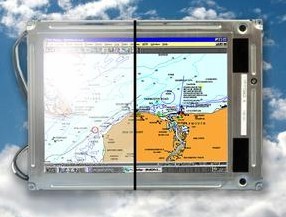ITD is promoting Optical Bonding for High Contrast and Low Reflection Industrial Touch Displays
Understanding and controlling reflected light will dramatically improve the performance of a display in any ambient lighting condition
A display's ability to be read in a bright environment has to do with the difference between its "lumination" and "illumination" from the outside environment. A display's brightness is its lumination. Its brightness, referred to as Nits (Candela per meter2) is the amount of light energy being emitted from the display. Illumination is the amount of reflected light coming off of the display. Reflected light is a set amount of ambient light coming off the display.
Light will travel through a variety of transparent materials; such as air, glass, plastic, and even water. Each of these materials have an ability to transmit or conduct light; which is measured by their "indices of refraction". Light, which cannot transmit or conduct through the material, will either be absorbed or reflected back out of the material. In the case of an air-to-glass interface, the reflection will be 4.5% of the ambient light striking the face of the display. All surfaces that have an index mismatch will reflect and the reflection is cumulative. In the case of a standard glass or plastic window, there are three surfaces with an index mismatch which will create a total reflection of approximately 13.5% of the ambient light. The reflected light is full spectrum white light and is added to a display's light output. Reflected light is added to the display's white light, making a display's "lumination" increase. Likewise, the reflected light is added to a display's black level and colors as well. This additional light makes black levels very diluted and instead of black, they appear grayish. Colors, with the additional white light, become pale and unsaturated. Whether a display is deemed viewable in daylight has less to do with its white level, and more to do with the contrast ratio between white and black. Typically 3: 1 ratio is considered the absolute minimum ratio and levels closer to 10:1 contrast ratio is preferred.
Optical bonding from ITD is a solid, transparent bond which optically couples to the face of the display. The outer surface of the window is treated with anti-reflecting coating which also matches the front surface of the glass with the index of refraction of air. This combination reduces the surface reflection of the display and front cover glass to less than .5% of the ambient light. A reduction of reflection of this level, all but eliminates reflective loss in most ambient lighting conditions.
With reductions of this level, displays with 300-500 nits of brightness will be viewable in daylight or indirect lighting conditions. At 500-800 nits’ brightness, most displays will be completely sunlight viewable.
Comparing the difference before and after optical bonding
For more information, please contact sales@itd-tech.com


 HOME
HOME CONTACT US
CONTACT US WHATSAPP
WHATSAPP